2575. 10" long:
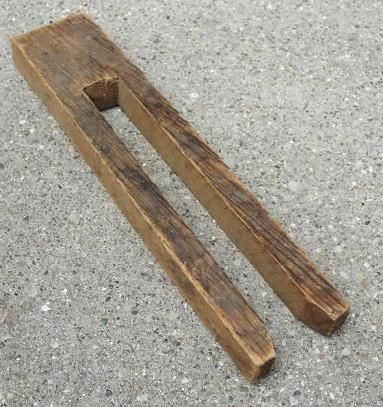
Larger image
2576. About 2-1/2" long, the idea here is to explain the purpose of the square hole:
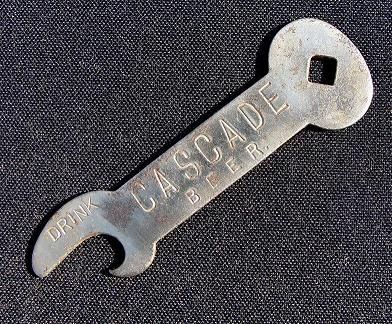
Larger image
2577. 30" long, sent in by a visitor:
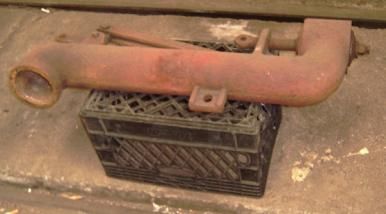
Larger images
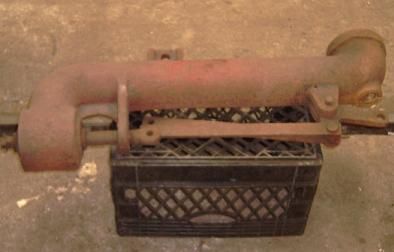
2578. Around 2-1/2" long:
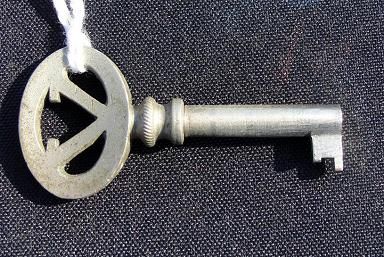
Larger image
2579. 12" long:
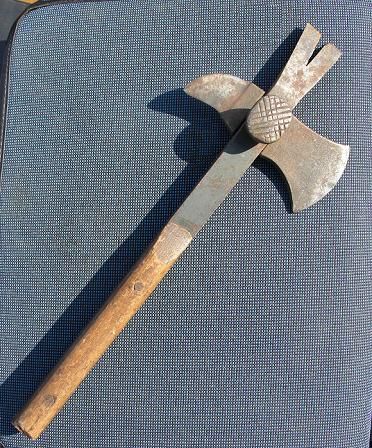
Larger image
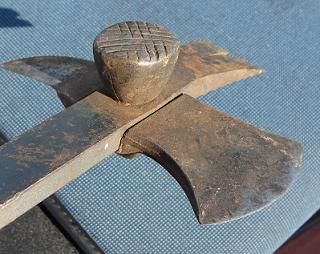
2580. 4-1/2" long:
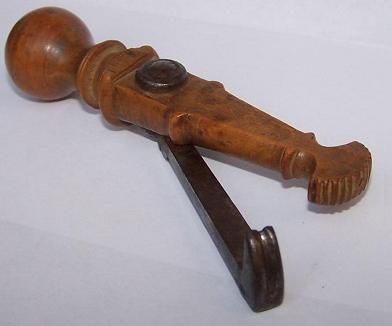
Larger image
Answers:
2575. According to the owner of it, this is a clapboard gauge or preacher, it was used to establish cutlines when putting weatherboards on a house, a drawing of one of them in use can be seen on this page. This gauge also could have been used with regular boards.

Larger image
2576. The square hole in this bottle opener was used to turn gas lights on and off:

Larger image
2577. A 50hp throttle from a steam locomotive (circa 1925), the owner's description: "The throttle valve is located inside the pressure boundary of the boiler, so is subject to external pressure in use. It is operated by a long rod through the back of the boiler and a bell crank setup (shown). At the bottom is the seat for the joint to the dry pipe, which carries steam to the front end, where it is delivered to the cylinder valves.
The valve is a semi-balanced spool valve, which means there are two seats, one slightly larger than the other. The seat away from the links tends to be held closed under external pressure, and the smaller end toward the links tends to be forced open. Overall, external pressure holds the valve shut."

Larger images

2578. This is a key for an old Victrola phonograph cabinet:

Larger image
2579. A tool was made to be used on crates:

Larger image

2580. This is an Italian Dental Pelican from the 1600s, it was used to pull teeth, more interesting old school dental instruments can be seen here:

Larger image
Are you interested in Old Tools and Tool Collecting? Want to learn more about tools, and meet some great people who have the same interests? Please take a minute to check out the Mid-West Tool Collectors Web Site at this link: www.mwtca.org.

To submit photos, send them to the address in my profile, please include dimensions, any text on the item, and where it was found.
Last week's set is seen below, click here to view the entire post.
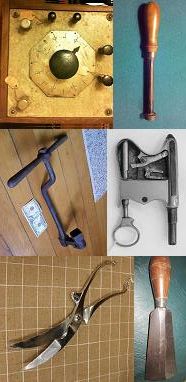
More discussion and comments on these photos can be found at the newsgroup rec.puzzles.
2578 Cabinet key for a Victrola
ReplyDeleteCorrect
Delete2576 Used to turn on oxygen or gas tanks in oxy-acetylene welding setups.
ReplyDeleteVery close, according to the owner it had a slightly different use
Delete2579 looks like a demolition tool — nail puller/prybar, hammer, axe, and the side opposite the axe is for some sort of ripping.
ReplyDeleteSounds like a good use for it, you're in the right ballpark but it has a more specific function
DeleteLooks like the tool a slate rook installer might use.
Delete2576 Used to turn valve on CO2 tank.
ReplyDelete2579: A "box tool" - hammer, axe, cutter, and pry bar in one. AKA "Ugly tool."
ReplyDelete2580: A cats-paw with a very fancy wooden handle
2577 Valve for a air/steam whistle?
ReplyDelete2579 is a Crate Tool for opening and closing wodden crates.
ReplyDelete2579 Tool used for wood shingling.
ReplyDelete2576 Used for regulating prestolite tanks on early auto headlight systems.
ReplyDelete2577 The more I look at it, the more it looks like a dump valve for either an air brake system or boiler blow-off.
ReplyDeleteHappy to find your blog and the great images that you have on a regular basis!
ReplyDeletethanx you are providing best information. i really appreciate you.
ReplyDeletedental instruments